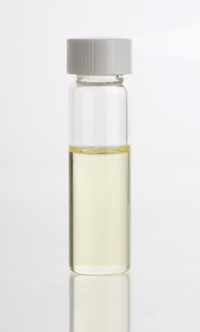
Photo from wikipedia
Tetraena mongolica Maxim is a species of Zygophyllaceae endemic to China. Because few insect pests affect its growth and flowering, we speculated that this plant produces defensive chemicals that are… Click to show full abstract
Tetraena mongolica Maxim is a species of Zygophyllaceae endemic to China. Because few insect pests affect its growth and flowering, we speculated that this plant produces defensive chemicals that are insect repellents or antifeedants. The effects of different fractions from crude stem and leaf extracts on Pieris rapae were examined. The results confirmed that the ethyl acetate (EtOAc) fraction from the stems had insecticidal potential. Five compounds were isolated from the EtOAc fraction: a volatile oil [bis(2-ethylhexyl) benzene-1,2-dicarboxylate (1)], three triterpenoids 2E-3β-(3,4-dihydroxycinnamoyl)-erythrodiol (2), 2Z-3β-(3,4-dihydroxycinnamoyl)-erythrodiol (3), and 2E-3β-(3,4-dihydroxyphenyl)-2-propenoate (4)], and one steroid [β-sitosterol (5)]. Compounds 1-5 exhibited different degrees of insecticidal activity, including antifeedant and growth-inhibition effects. Compounds 1-5 inhibited the activity of carboxylesterase (CarE) and acetylcholinesterase (AChE) to different degrees. Compound 1 had the strongest antifeedant and growth-inhibition effects, and significantly inhibited the activity of CarE and AChE. Our results indicate that compounds 1-4 are the major bioactive insecticidal constituents of Tetraena mongolica. This work should facilitate the development and application of plant-derived botanical pesticides.
Journal Title: Pesticide biochemistry and physiology
Year Published: 2020
Link to full text (if available)
Share on Social Media: Sign Up to like & get
recommendations!